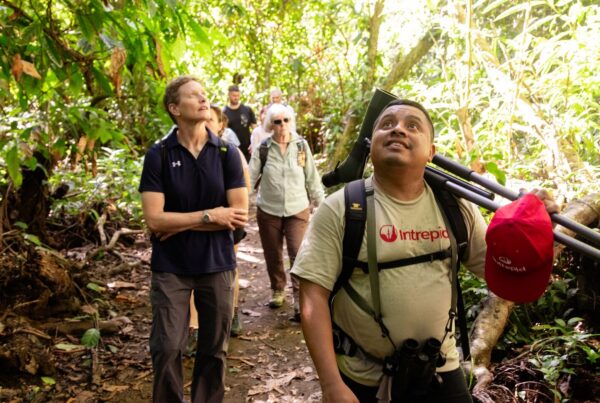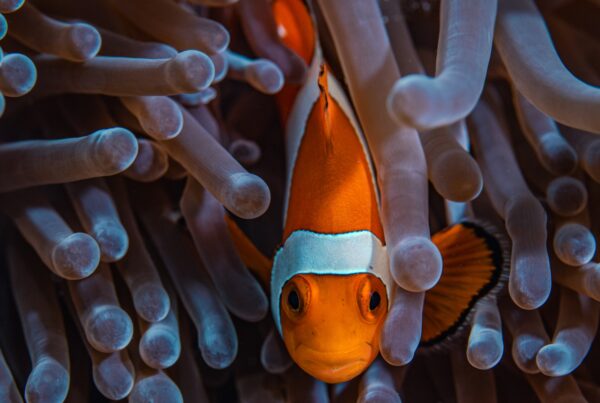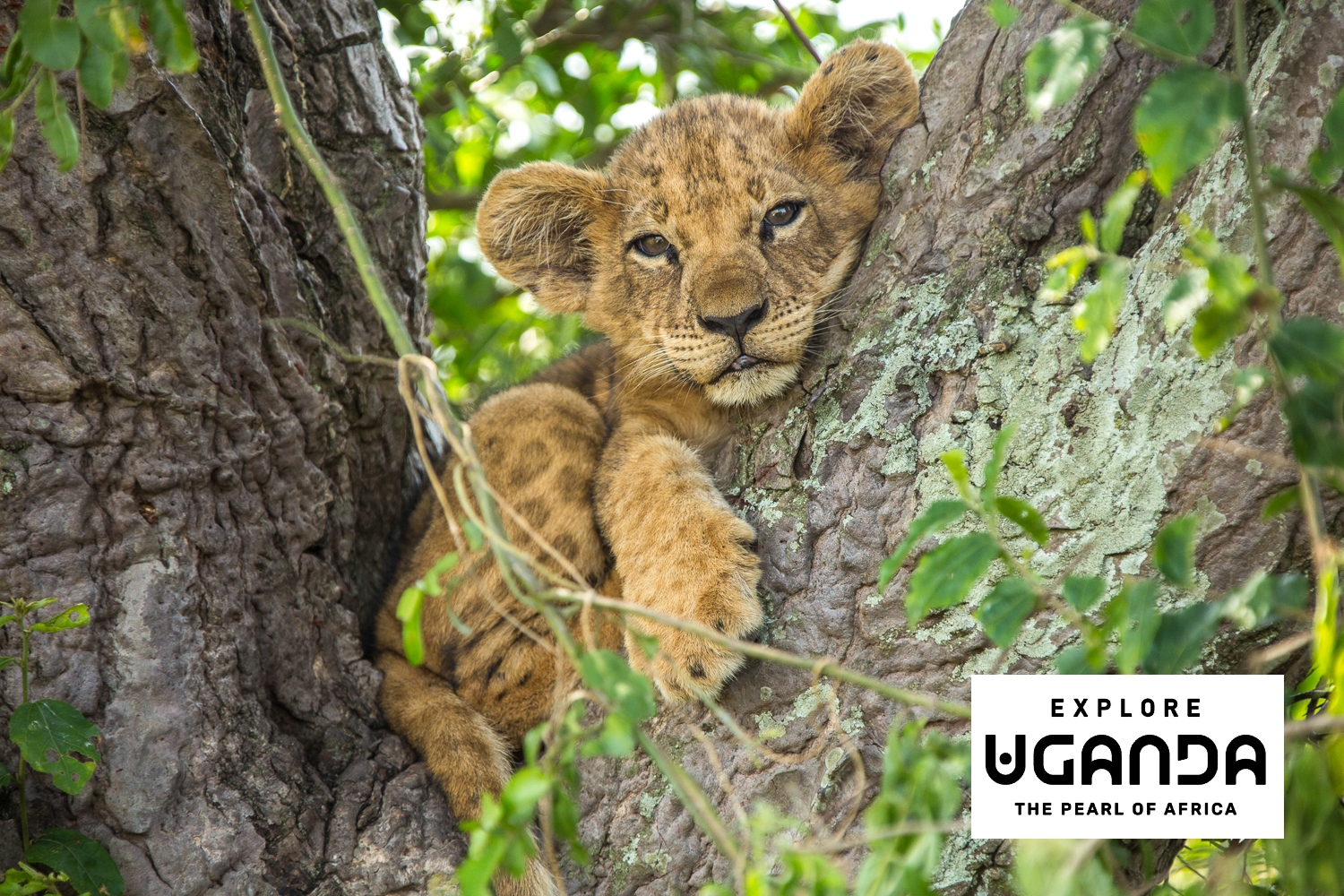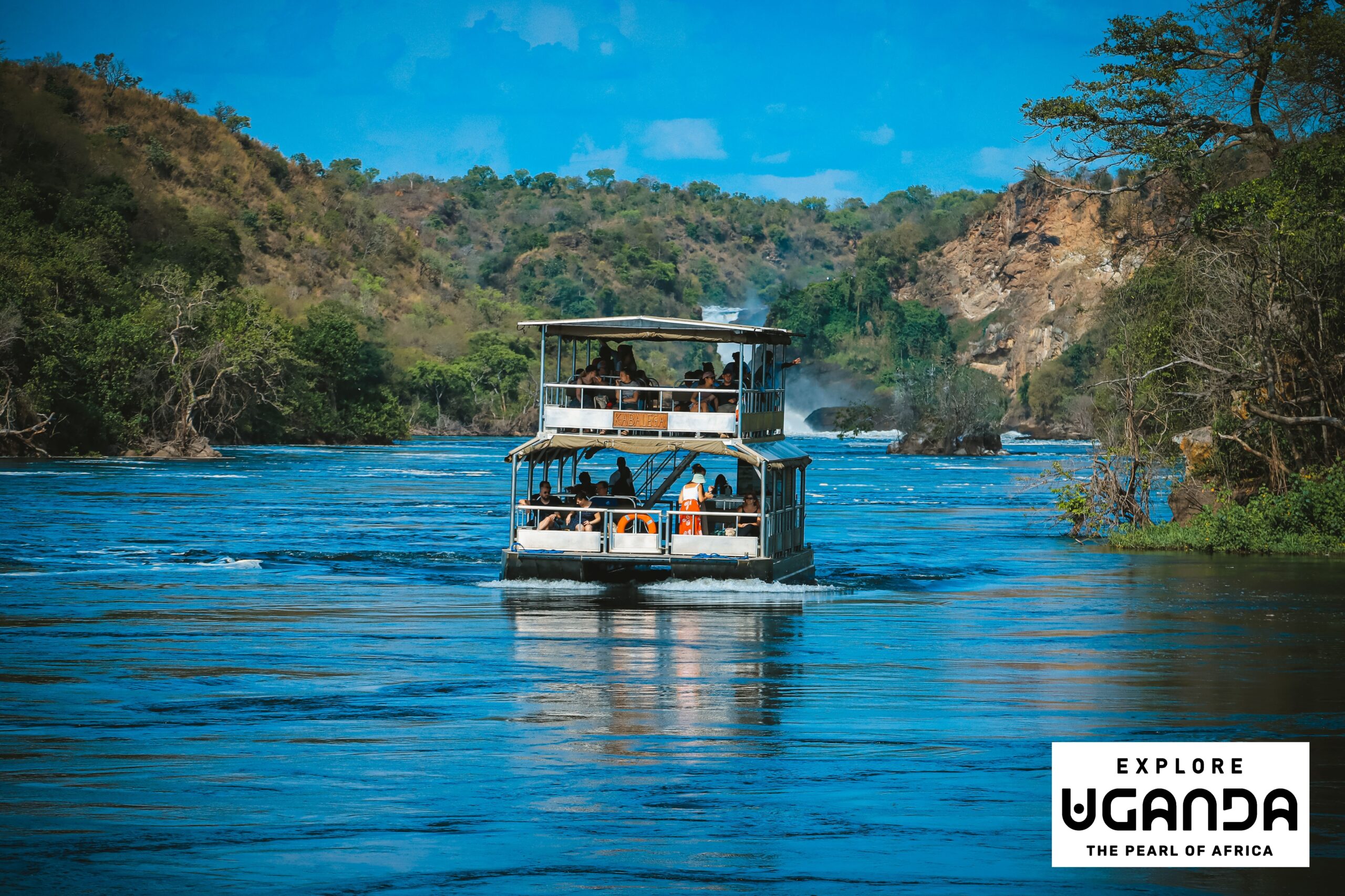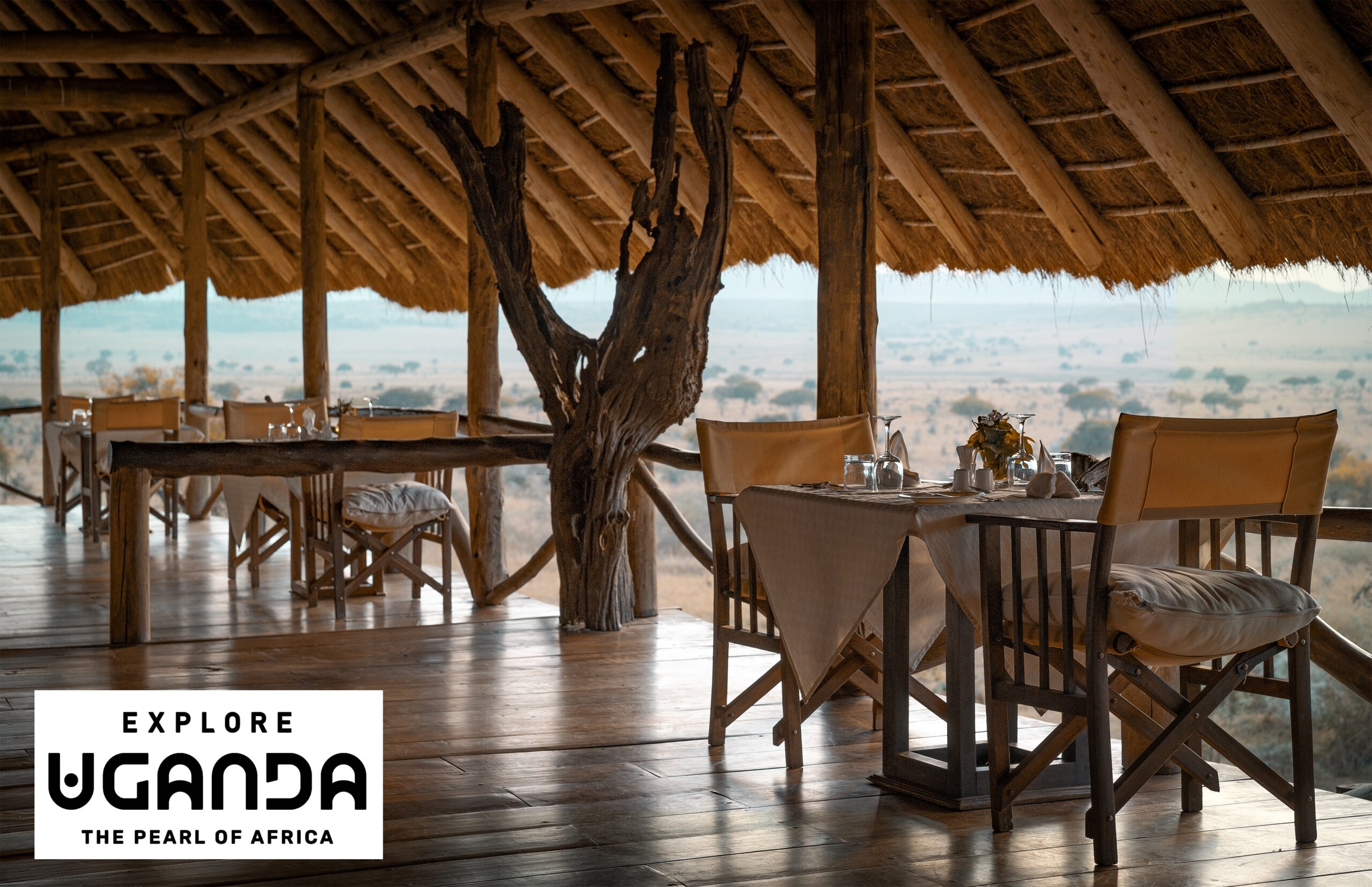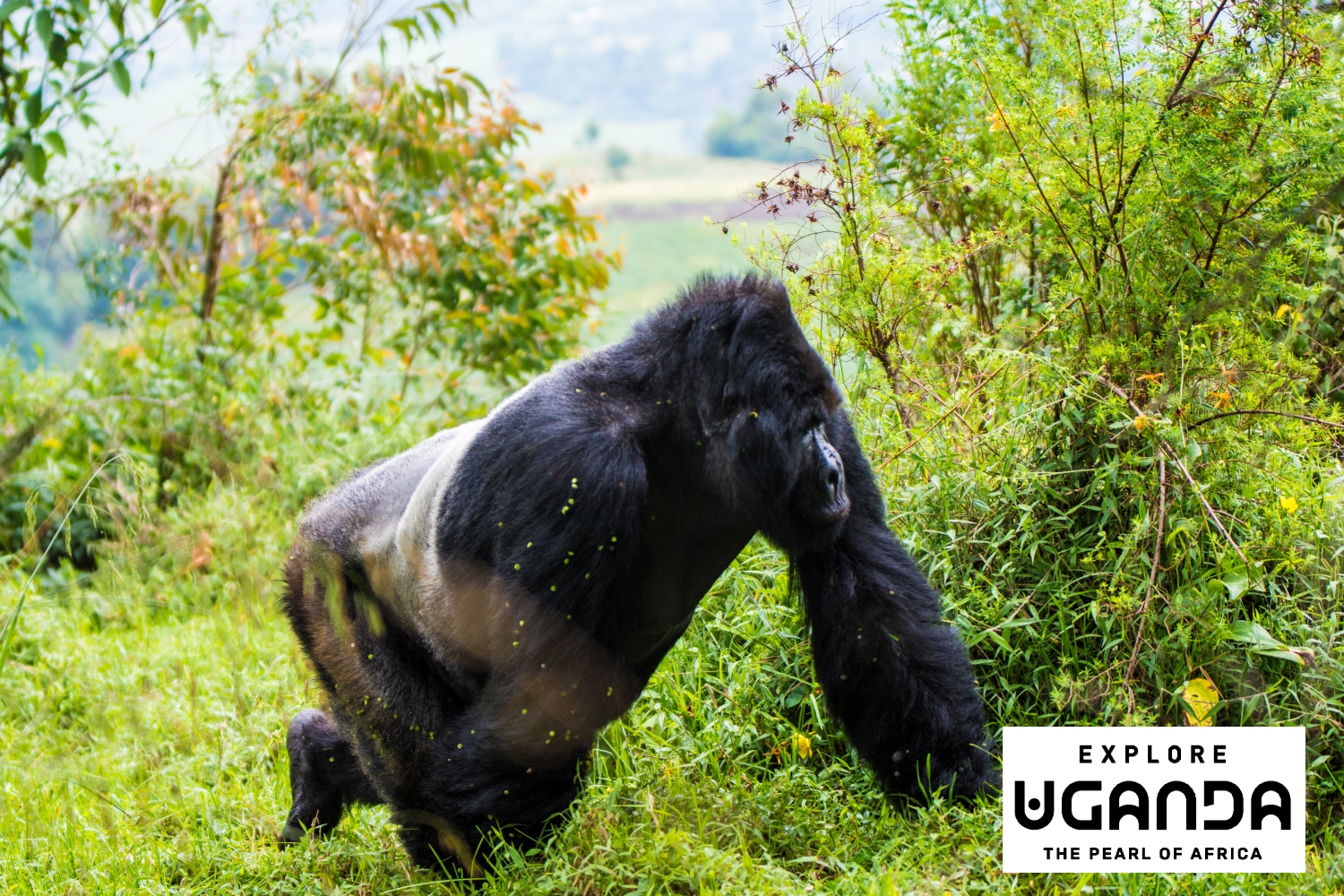Uganda is one of the best places in the world to see mountain gorillas in their natural environment. It is home to roughly half of the planet’s remaining mountain gorilla population, around 460 individuals, most of which live in Bwindi Impenetrable National Park.
The rest are found in Mgahinga Gorilla National Park, where the gorillas move freely across the border with Rwanda’s Volcanoes National Park and the Democratic Republic of Congo’s Virunga National Park.
Gorilla trekking in Uganda is a regulated and conservation-focused activity that supports both wildlife protection and local communities.
Each visitor must hold a trekking permit issued by the Uganda Wildlife Authority, costing around $US800 per person as of 2025.
The revenue funds anti-poaching operations, ranger training and community development projects.
Uganda’s treks are also considered slightly more affordable than those in Rwanda, making the country a popular choice for travellers seeking a high-quality gorilla experience at a lower cost.
Nadine Jones from Jones and Co travelled to Uganda for a gorilla trekking experience. Here’s what she shared with Traveltalk:
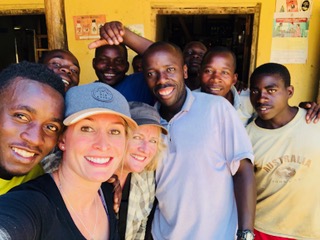 “We trekked just under two hours through the forest before finding the family; time honestly flew. The journey itself, moving through the shifting landscape of the national park, was an experience in its own right.
“We trekked just under two hours through the forest before finding the family; time honestly flew. The journey itself, moving through the shifting landscape of the national park, was an experience in its own right.
During my first trek, I was so caught up capturing the moment on my GoPro, camera and iPhone that I realised I hadn’t actually been present with the gorillas.
On the second trek, I made the conscious decision to put everything away and just ‘be there’. That hour was one of the most profound travel moments I’ve ever experienced, and I wouldn’t have had it if I had only trekked once.
The guides and trackers do an excellent job of matching trekking difficulty to each traveller’s fitness level, though a moderate level of fitness is recommended. The moment you see the gorillas, you forget about everything else.
It remains one of the most moving wildlife encounters I’ve ever had, absolutely worth every step. Learning about the conservation work behind the scenes only deepened the experience. Seeing firsthand how these endangered creatures are being protected is incredibly impactful.”
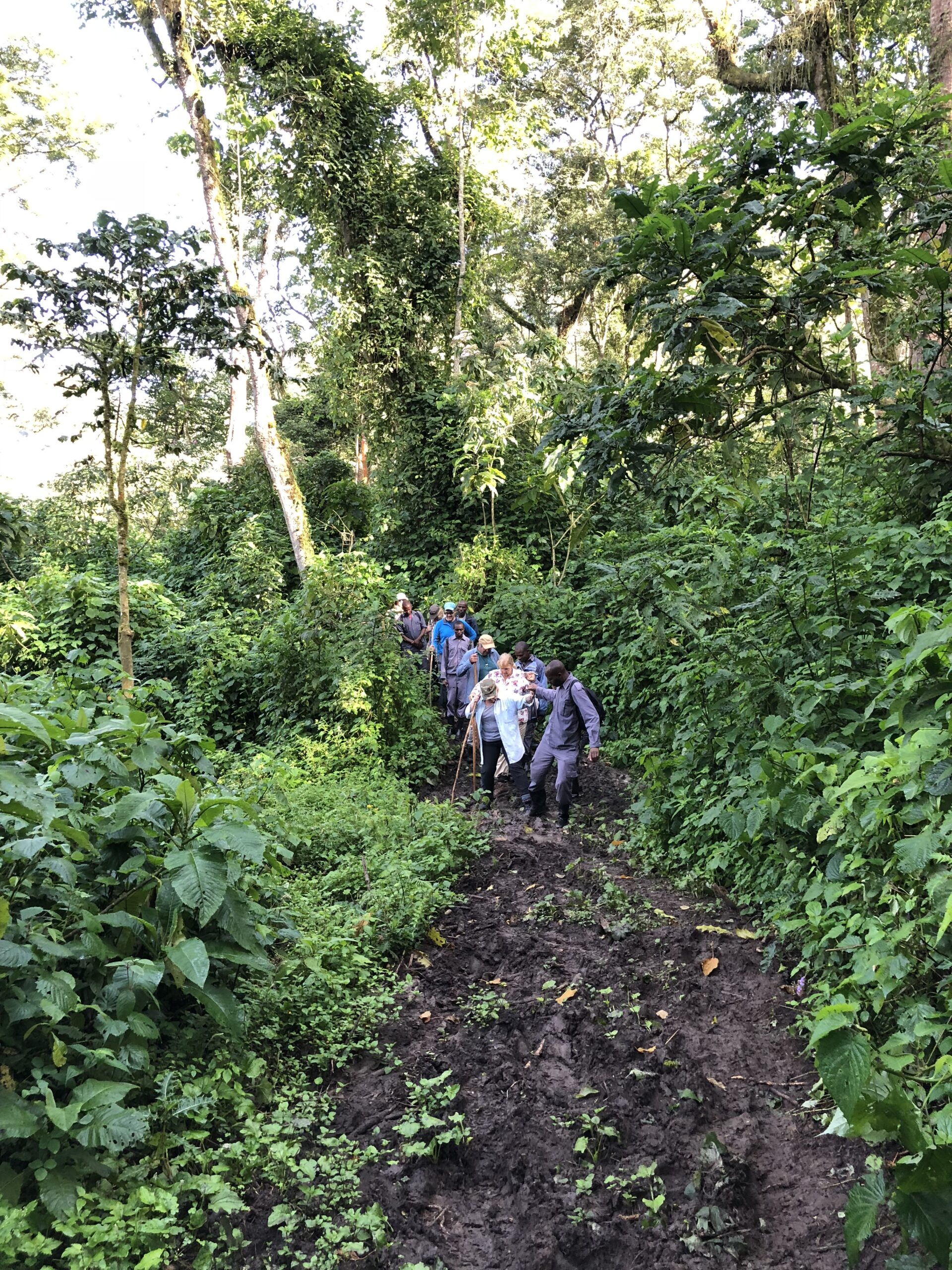 Starting the Day
Starting the Day
Most treks begin early in the morning. Travellers arrive at the park headquarters around 7 am for a briefing from Uganda Wildlife Authority rangers. The session covers trekking rules, safety and what to do when near the gorillas.
Participants are divided into small groups of up to eight people, each assigned to a specific gorilla family. This keeps visitor numbers low and minimises disturbance to the animals. After the briefing, visitors meet their guides and porters before heading into the forest.
The Trek
The duration of the trek depends on where the gorilla family has moved overnight. It can take from 30 minutes to more than four hours to find them. The terrain is steep and uneven, with dense vegetation, mud and occasional rain, so a reasonable level of fitness is required.
Rangers use radios and trackers to locate the gorillas, cutting paths through the undergrowth when necessary. Porters are available to carry backpacks for an additional fee, which supports local communities. The trek usually includes several rest stops, where guides share information about the forest’s plants and wildlife.
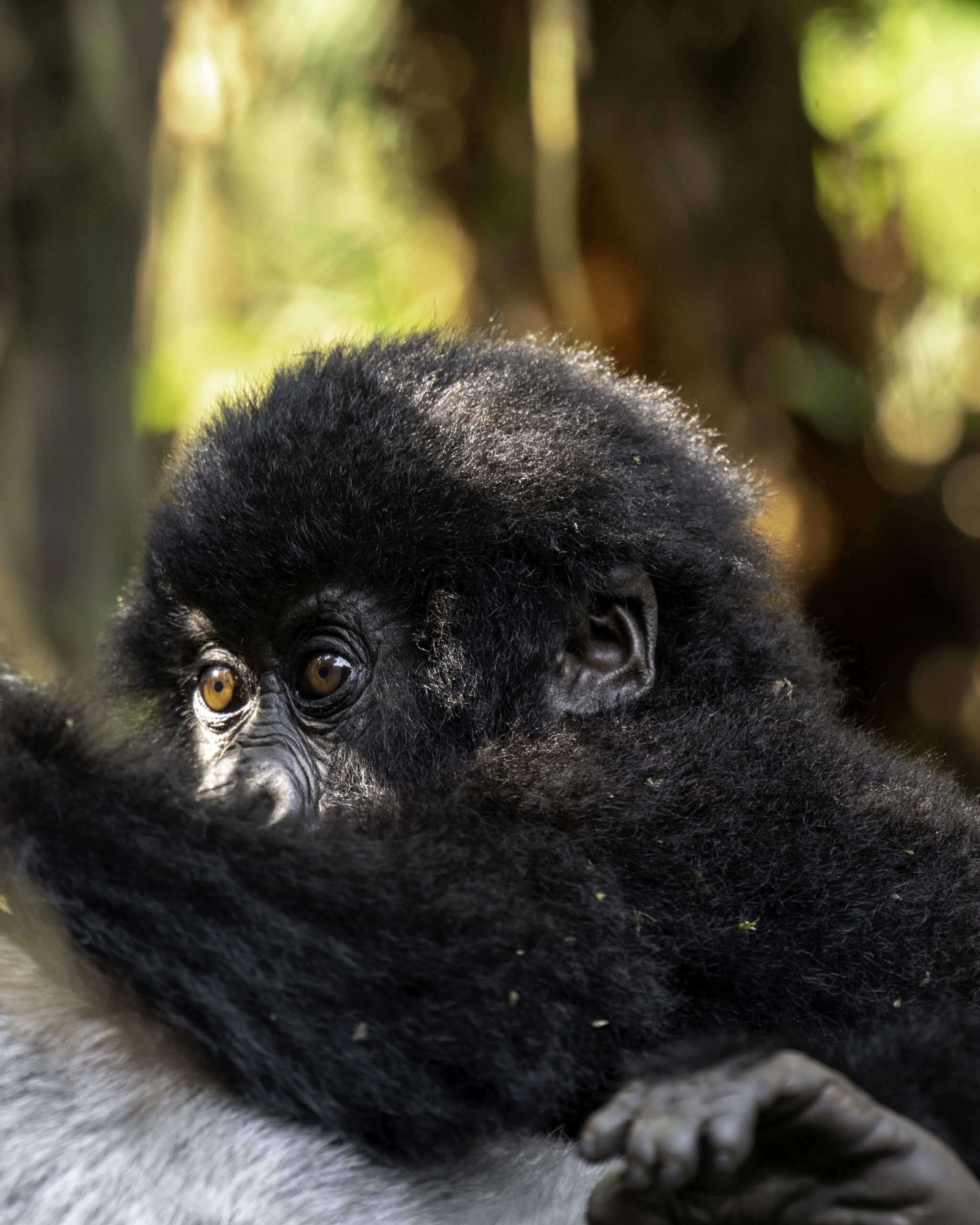 The Gorilla Encounter
The Gorilla Encounter
When the gorillas are located, visitors leave bags and walking sticks a short distance away before approaching quietly. Each group is allowed a maximum of one hour with the gorillas. During this time, participants can observe the family’s behaviour, which might include feeding, grooming, or playing.
The guides ensure visitors stay at least seven metres away from the animals and follow park rules to prevent the spread of disease. Flash photography and direct eye contact with the gorillas are discouraged.
Seeing a mountain gorilla family in its natural habitat offers insight into their social structure and behaviour. Adult males, known as silverbacks, lead and protect the group, while females care for infants and juveniles. Guides often provide detailed commentary about each gorilla family’s history and habits.
Returning to Base
After the viewing period, the group retraces its route back to the starting point. The return journey is usually quicker but can still be challenging due to slippery terrain. Back at the headquarters, visitors receive certificates confirming that they completed the trek.
Preparation and Requirements
A gorilla trekking permit is mandatory. As of 2025, the permit costs around $US800 per person and must be purchased in advance through the Uganda Wildlife Authority or licensed tour operators.
Recommended clothing includes long trousers, long-sleeved shirts, sturdy hiking boots, waterproof jackets and gardening gloves for handling vegetation. Insect repellent and a reusable water bottle are also advised.
The best time to go is during the dry seasons, from June to September and December to February, when trails are less slippery. However, gorilla trekking is possible all year round.
Beyond the Trek
Travellers often combine gorilla trekking with visits to nearby attractions such as Lake Bunyonyi, Queen Elizabeth National Park or the Batwa community villages. These areas offer birdwatching, boat trips and cultural experiences that complement the wildlife encounter.
Accommodation near the parks ranges from budget guesthouses to luxury lodges, most of which can arrange trekking permits and transport.
Frequently Asked Questions
How likely am I to see a gorilla?
The chances of seeing a gorilla during a trek in Uganda are very high, typically over 95 per cent. Each gorilla family is closely monitored by rangers, who track their location daily. Guides set out only after receiving the latest information, so sightings are almost guaranteed.
What is the maximum number of people per day with each gorilla family?
A maximum of eight visitors is allowed to visit a single gorilla family per day. This limit helps reduce stress on the gorillas and keeps encounters quiet and manageable.
How many nights should I stay for the gorilla trek? and how many nights in Uganda?
A stay of 2–3 nights in Bwindi or Mgahinga provides the ideal balance of travel time and trekking opportunities.
For a well-rounded itinerary, spend 10 nights in Uganda, as the country offers extraordinary landscapes, wildlife, culture, and adventure far beyond the gorilla encounter.
How many gorilla treks should I book?
It’s recommended to book two gorilla treks, as the first can be overwhelming and often spent behind the camera, while the second allows you to truly connect with the experience.
How long does a trek take?
The trek can last anywhere from one to five hours depending on how far the gorillas have moved. The actual viewing time with the gorillas is limited to one hour.
How fit do I need to be?
A moderate level of fitness is required. Treks involve walking through thick vegetation, climbing steep slopes and occasionally navigating muddy terrain. It is not a technical hike, but endurance and stability are important.
Do I have to carry my own pack?
Porters are available and absolutely worth hiring (approx. USD $10). They carry your pack, support you on the terrain, and their presence adds immense value to the experience. Don’t forget, it also supports the local surrounding villages with jobs and income.
 What should I wear?
What should I wear?
Recommend gaiters, gloves and a light rain jacket.
When is the best time to go?
The best trekking conditions are during Uganda’s dry seasons: June to September and December to February. Trails are drier and easier to manage, although treks operate throughout the year.
Can children participate?
The minimum age for gorilla trekking in Uganda is 15 years. This rule helps ensure safety and compliance with park regulations.
Is photography allowed?
Photography is permitted but without flash. Visitors are encouraged to take photos quietly and avoid sudden movements that might disturb the gorillas.
How are gorilla trekking fees used?
Permit fees contribute directly to conservation and community support. A portion funds the Uganda Wildlife Authority’s protection efforts, while another part supports local communities living around the parks.


